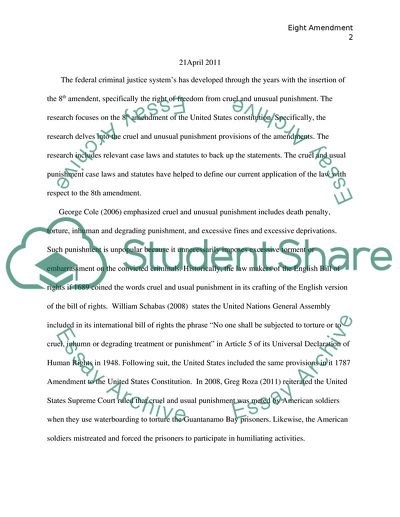Cite this document
(The Federal Criminal Justice System: the Tight of Freedom From Cruel Research Paper, n.d.)
The Federal Criminal Justice System: the Tight of Freedom From Cruel Research Paper. Retrieved from https://studentshare.org/history/1751775-8th-amendment-of-the-us-constitution-freedom-from-cruel-and-unusual-punishment
The Federal Criminal Justice System: the Tight of Freedom From Cruel Research Paper. Retrieved from https://studentshare.org/history/1751775-8th-amendment-of-the-us-constitution-freedom-from-cruel-and-unusual-punishment
(The Federal Criminal Justice System: The Tight of Freedom From Cruel Research Paper)
The Federal Criminal Justice System: The Tight of Freedom From Cruel Research Paper. https://studentshare.org/history/1751775-8th-amendment-of-the-us-constitution-freedom-from-cruel-and-unusual-punishment.
The Federal Criminal Justice System: The Tight of Freedom From Cruel Research Paper. https://studentshare.org/history/1751775-8th-amendment-of-the-us-constitution-freedom-from-cruel-and-unusual-punishment.
“The Federal Criminal Justice System: The Tight of Freedom From Cruel Research Paper”, n.d. https://studentshare.org/history/1751775-8th-amendment-of-the-us-constitution-freedom-from-cruel-and-unusual-punishment.


